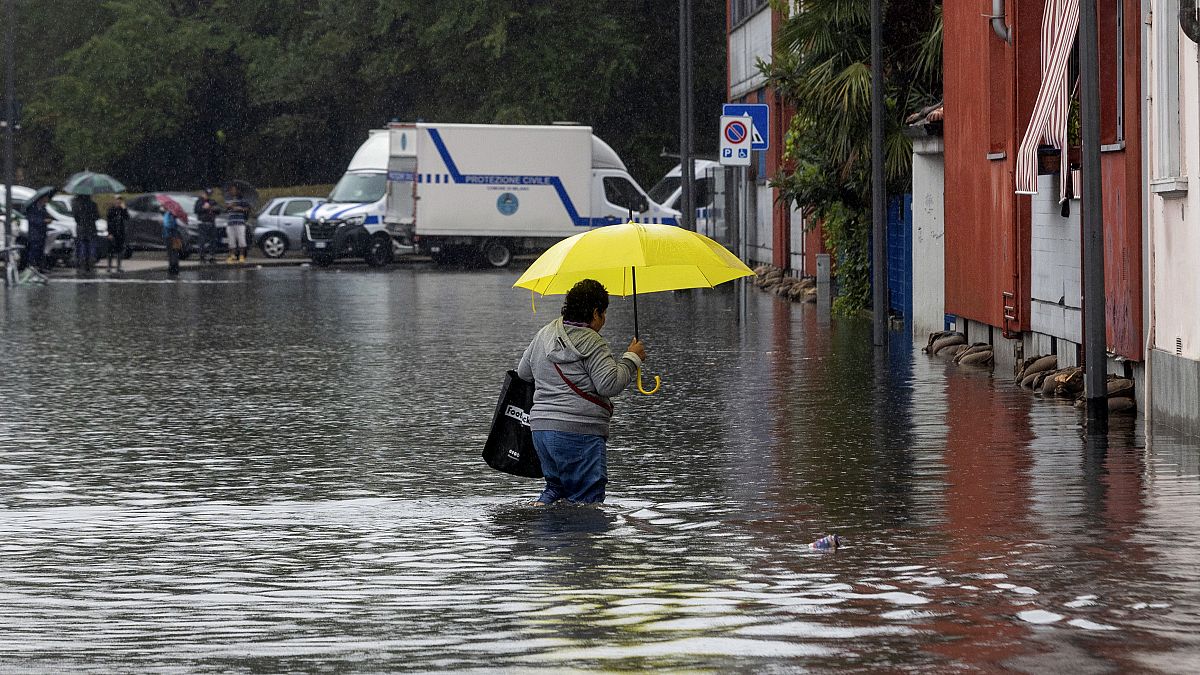The climate crisis is causing more frequent and severe extreme weather events such as heatwaves, droughts, downbursts, and flooding, both in Europe and around the world. Recently, northern Italy has been hit by violent rainstorms that have caused widespread flooding in several regions. In Piedmont, a man was swept away on a tractor in the Orco creek near Turin, raising fears for his life. Local rescuers are currently searching for the missing 58-year-old man. In Val di Susa, two bridges collapsed, a provincial road was blocked, and about 50 people in two villages became isolated due to overflowing rivers. Lombardy and Veneto also experienced flooding, causing damage and disruptions in Milan where the Seveso and Lambro rivers overflowed.
Firefighters in Milan were forced to respond to numerous calls to rescue people trapped in flooded underpasses and to pump water out of basements. The flooding was so severe that some subway services had to be suspended. For the first time since its establishment in 1976, Milan’s Radio Popolare station went off the air as its broadcast center was inundated with water. Scientists warn that the rising frequency and intensity of extreme weather events are a direct result of the climate crisis. They attribute the heavier storms to the increased moisture warm air can hold. In contrast, Southern Italy has been suffering from a severe drought, causing significant issues for local agriculture and tourism, particularly in the islands of Sicily and Sardinia.
The impact of the climate crisis on extreme weather events is evident in the recent wave of violent rainstorms that battered northern Italy, causing widespread flooding, damage, and disruptions. The severity of the storms led to the sweeping away of a man on a tractor in the Orco creek in Piedmont, raising concerns for his safety. Local rescuers are currently conducting a search operation to locate the missing individual. In Val di Susa, the overflowing river resulted in the collapse of two bridges, blockage of a provincial road, and the isolation of approximately 50 residents in two villages. Additionally, Lombardy and Veneto experienced widespread flooding that caused damage and disruptions in Milan, where the Seveso and Lambro rivers overflowed.
Milan firefighters were inundated with calls to rescue individuals stuck in flooded underpasses and to drain water from basements. The flooding was severe enough to prompt the suspension of some subway services, and Milan’s Radio Popolare station had to go off the air due to water inundation at its broadcast center. Scientists emphasize that the increasing frequency and intensity of extreme weather events, such as the recent rainstorms in Italy, are a direct consequence of the climate crisis. They attribute the heavier storms to the ability of warm air to hold more moisture. While the northern regions of Italy grapple with violent rainstorms and flooding, southern Italy is facing a severe drought that is causing significant challenges for local agriculture and tourism, particularly in Sicily and Sardinia.
The severe impact of the climate crisis on extreme weather events is exemplified by the recent violent rainstorms in northern Italy, which have caused widespread flooding and destruction. The situation in Piedmont took a dangerous turn when a man was swept away on a tractor in the Orco creek, prompting a search operation to locate the missing individual. In Val di Susa, the overflowing river led to the collapse of bridges, blockage of roads, and isolation of residents in villages. Lombardy and Veneto also experienced flooding, resulting in damage and disruptions in Milan. Firefighters in Milan were busy rescuing individuals trapped in flooded underpasses and pumping out water from basements. The severity of the flooding led to the suspension of some subway services and the temporary shutdown of Milan’s Radio Popolare station.
Scientists highlight that extreme weather events, like the recent rainstorms in Italy, are becoming more frequent and intense due to the climate crisis. They explain that warm air can hold more moisture, leading to heavier storms. While the northern regions of Italy face violent rainstorms and flooding, southern Italy is grappling with a severe drought that is causing significant challenges for agriculture and tourism, particularly in Sicily and Sardinia. As the world continues to witness the devastating impact of the climate crisis on extreme weather events, it is crucial for governments, communities, and individuals to take urgent action to mitigate its effects and work towards a sustainable future.










